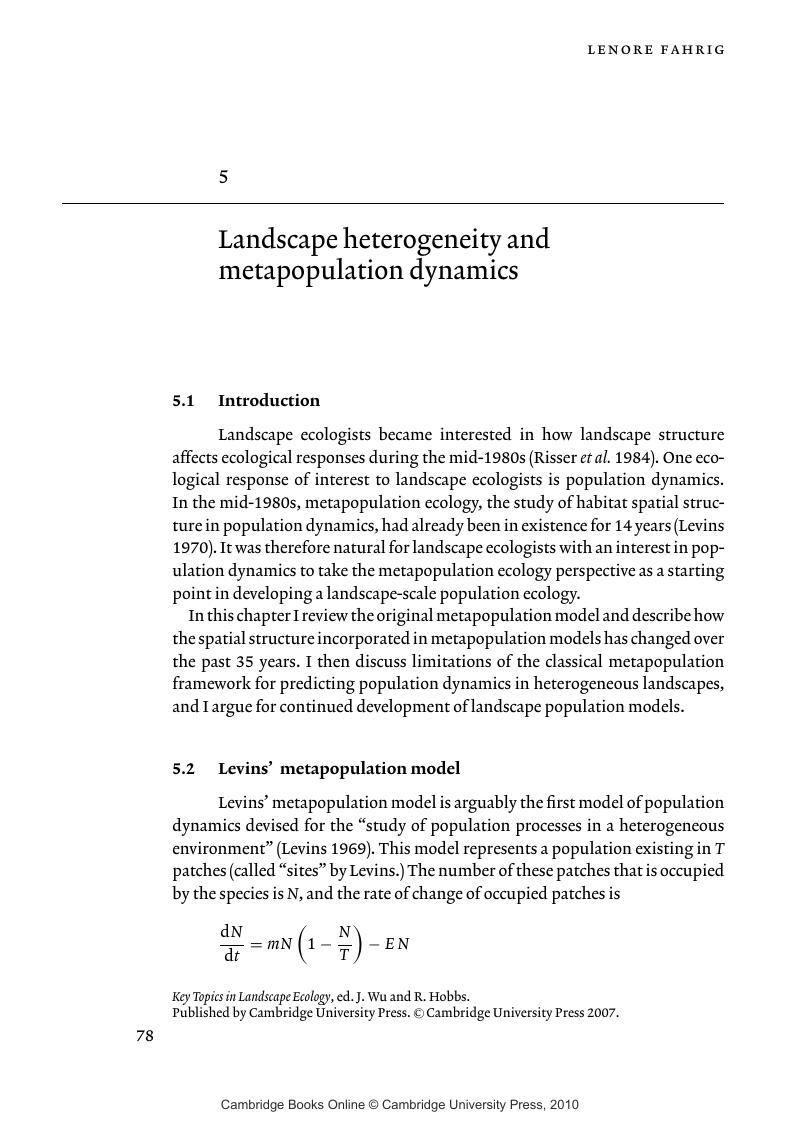Book contents
- Frontmatter
- Contents
- List of contributors
- Preface
- PART I Introduction
- PART II Key topics and perspectives
- 2 Adequate data of known accuracy are critical to advancing the field of landscape ecology
- 3 Landscape pattern analysis: key issues and challenges
- 4 Spatial heterogeneity and ecosystem processes
- 5 Landscape heterogeneity and metapopulation dynamics
- 6 Determining pattern–process relationships in heterogeneous landscapes
- 7 Scale and scaling: a cross-disciplinary perspective
- 8 Optimization of landscape pattern
- 9 Advances in detecting landscape changes at multiple scales: examples from northern Australia
- 10 The preoccupation of landscape research with land use and land cover
- 11 Applying landscape-ecological principles to regional conservation: the WildCountry Project in Australia
- 12 Using landscape ecology to make sense of Australia's last frontier
- 13 Transferring ecological knowledge to landscape planning: a design method for robust corridors
- 14 Integrative landscape research: facts and challenges
- PART III Synthesis
- Index
- References
5 - Landscape heterogeneity and metapopulation dynamics
Published online by Cambridge University Press: 12 January 2010
- Frontmatter
- Contents
- List of contributors
- Preface
- PART I Introduction
- PART II Key topics and perspectives
- 2 Adequate data of known accuracy are critical to advancing the field of landscape ecology
- 3 Landscape pattern analysis: key issues and challenges
- 4 Spatial heterogeneity and ecosystem processes
- 5 Landscape heterogeneity and metapopulation dynamics
- 6 Determining pattern–process relationships in heterogeneous landscapes
- 7 Scale and scaling: a cross-disciplinary perspective
- 8 Optimization of landscape pattern
- 9 Advances in detecting landscape changes at multiple scales: examples from northern Australia
- 10 The preoccupation of landscape research with land use and land cover
- 11 Applying landscape-ecological principles to regional conservation: the WildCountry Project in Australia
- 12 Using landscape ecology to make sense of Australia's last frontier
- 13 Transferring ecological knowledge to landscape planning: a design method for robust corridors
- 14 Integrative landscape research: facts and challenges
- PART III Synthesis
- Index
- References
Summary

- Type
- Chapter
- Information
- Key Topics in Landscape Ecology , pp. 78 - 91Publisher: Cambridge University PressPrint publication year: 2007
References
- 21
- Cited by



